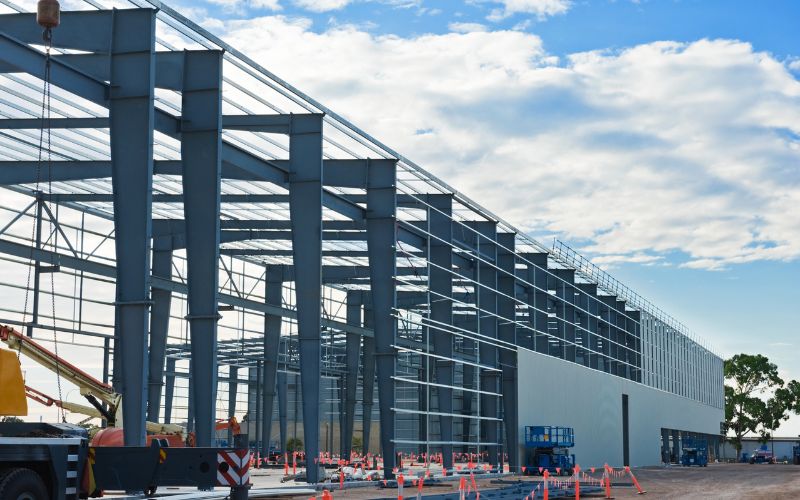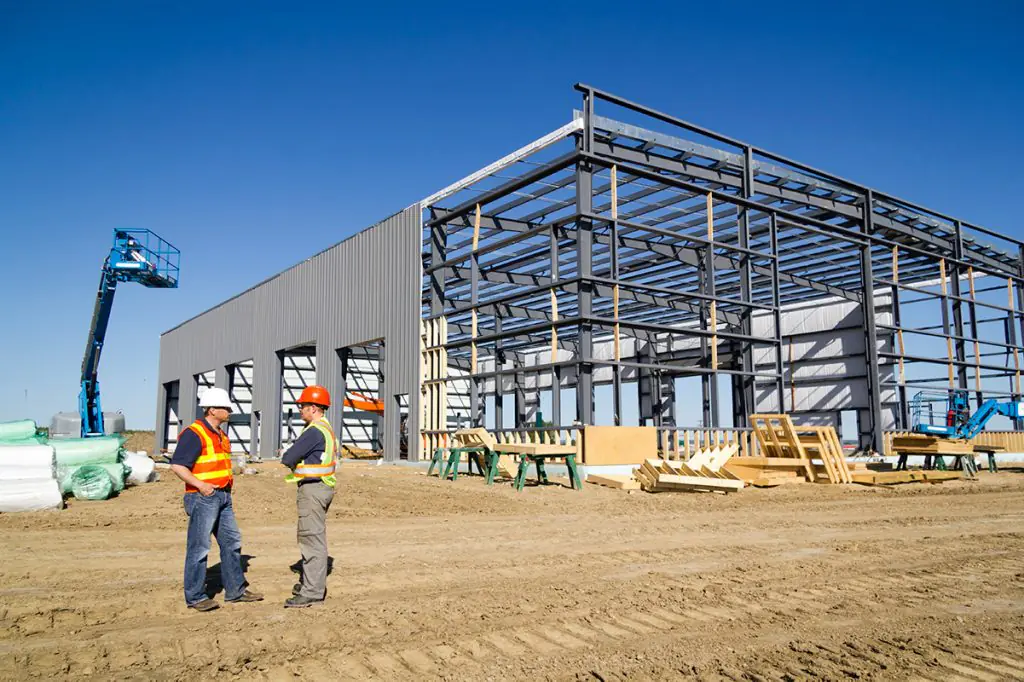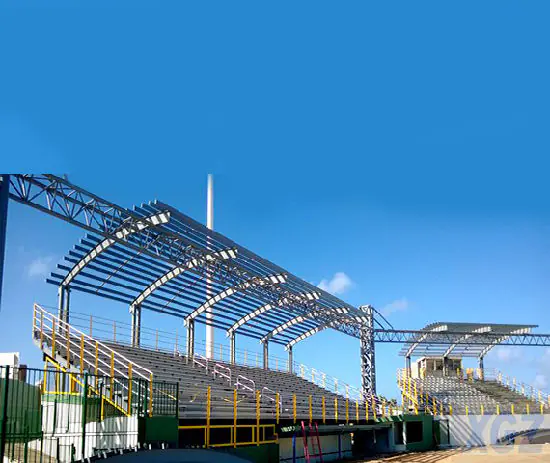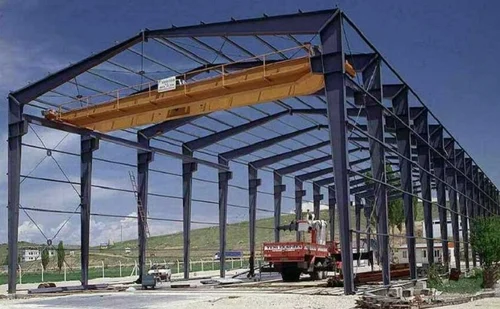Soundproof Steel Warehouse Construction: Effective Solutions for Industry
Learn soundproof steel warehouse construction techniques to enhance productivity and comfort in your work environment.
Soundproof steel warehouse construction is becoming an increasingly popular solution in the modern industrial world. This article delves deep into what soundproof steel warehouse construction is, its benefits, and detailed steps to build one.
From material selection to installation techniques, you’ll get a comprehensive guide to creating a more comfortable and productive work environment.
Discover how to improve operational efficiency while reducing noise impact on the surrounding environment through proper implementation of soundproof steel warehouse construction.
1.What is Soundproof Steel Warehouse Construction?
Soundproof steel warehouse construction is a method of building storage facilities or work areas using steel as the primary material, with the addition of special elements to reduce sound. The main goal is to create an environment isolated from external noise while preventing sound from inside the warehouse from propagating outwards.
In this construction, steel is chosen for its superior strength and ability to withstand heavy loads. However, steel itself is not a good sound-dampening material. Therefore, special techniques and additional materials are used to enhance the sound absorption capabilities of the steel structure.
The main components in soundproof steel warehouse construction include:
- Steel frame: Forms the basic structure of the warehouse.
- Wall and roof panels: Usually made of steel with insulation layers.
- Sound-absorbing materials: Such as acoustic foam, mineral wool, or composite materials.
- Special ventilation systems: Designed to minimize sound transfer.
- Soundproof doors and windows: Using special seals and laminated glass.
The main benefits of soundproof steel warehouse construction include:
- Reducing noise pollution to the surrounding environment.
- Improving worker concentration and productivity.
- Enabling 24-hour operations without disturbing surrounding areas.
- Protecting sensitive equipment from vibration and noise.
- Enhancing security by reducing sound leakage of sensitive information.
This construction is highly suitable for various industries, including manufacturing, warehousing, recording studios, and testing facilities. By combining the strength of steel and sound dampening technology, soundproof steel warehouse construction offers an effective solution for modern industry needs.

2.How to Build a Soundproof Steel Warehouse?
Building a soundproof steel warehouse requires careful planning and meticulous execution. Here are detailed steps to build an effective soundproof steel warehouse:
- Planning and Design
- Conduct needs analysis: Determine the required level of sound dampening based on activities inside and outside the warehouse.
- Create structural design: Collaborate with structural engineers to design a strong steel frame that meets acoustic needs.
- Plan ventilation system: Design HVAC systems that can minimize sound transfer while maintaining good air circulation.
- Choose materials: Determine the types of steel, panels, and sound-absorbing materials to be used.
- Site Preparation
- Conduct soil surveys to ensure stability.
- Prepare a strong foundation, typically using reinforced concrete.
- Install a good drainage system to prevent moisture issues.
- Steel Frame Construction
- Start with the installation of main steel columns.
- Continue with the installation of beams and roof frames.
- Ensure all joints are properly welded or bolted to reduce vibration.
- Wall and Roof Panel Installation
- Use sandwich panels with insulation core for walls and roof.
- Ensure panels are tightly installed to prevent sound leakage.
- Seal all joints with special acoustic materials.
- Sound Dampening System Installation
- Install additional sound-absorbing layers behind wall and roof panels.
- Use materials such as acoustic foam, mineral wool, or special composite panels.
- Pay attention to critical areas such as corners and joints to ensure there are no gaps.
- Soundproof Flooring Installation
- Use a floating floor to isolate vibrations.
- Install sound-absorbing layers under the main floor.
- Use flooring materials that have sound-absorbing properties.
- Special Doors and Windows Installation
- Install soundproof doors with double or triple seals.
- If windows are needed, use laminated glass with air cavities.
- Ensure all openings have perfect seals when closed.
- Ventilation and HVAC Systems
- Install air ducts with internal sound-absorbing linings.
- Use silencers on intakes and exhausts.
- Ensure HVAC units are placed on vibration dampeners.
- Handling Sound Leaks
- Identify and address potential sound leaks, such as around pipes and cables.
- Use acoustic sealant to close small gaps.
- Install acoustic boots around wall and roof penetrations.
- Interior Acoustic Treatment
- Add sound-absorbing panels on interior walls and ceilings.
- Consider using baffles or hanging panels for areas with high ceilings.
- Install carpets or sound-absorbing floor materials if suitable for warehouse use.
- Testing and Adjustment
- Conduct acoustic testing to verify the achieved level of sound dampening.
- Identify areas that may require additional improvements or adjustments.
- Make adjustments based on test results to achieve sound dampening targets.
- Maintenance and Upkeep
- Create a routine inspection schedule to ensure the integrity of the soundproofing system.
- Regularly check and replace door and window seals.
- Perform maintenance on HVAC systems to ensure quiet operation.
- Additional Considerations
- If the warehouse will be used for high-vibration activities, consider using additional vibration isolation systems.
- For areas with very high acoustic needs, consider using double wall construction with air cavities.
- If necessary, add active noise reduction systems for low frequencies that are difficult to dampen passively.
- Compliance and Certification
- Ensure construction meets local building and safety standards.
- If required, obtain acoustic certification from relevant authorities.
- Document all aspects of construction for future reference and maintenance.
By following these steps and paying attention to detail at each stage, you can build an effective soundproof steel warehouse. It’s important to remember that each project may have unique needs, so consultation with acoustic experts and structural engineers is highly recommended for optimal results.

3.Conclusion
Soundproof steel warehouse construction is an innovative solution that combines the structural strength of steel with advanced sound dampening technology. This approach offers various significant benefits for modern industry, ranging from increased operational efficiency to protecting the environment from noise pollution.
Success in building a soundproof steel warehouse lies in attention to detail at every stage of construction. From selecting the right materials, careful design, to precise execution, every aspect contributes to the overall effectiveness of the sound dampening system. It’s important to involve experts in acoustics and steel construction to ensure optimal results.
Investing in soundproof steel warehouse construction is not just about complying with noise regulations. It’s also a strategic step to improve productivity, health, and worker well-being. By creating a quieter and more comfortable work environment, companies can enhance employee focus and efficiency, which ultimately positively impacts the bottom line.

Although it may require a higher initial investment compared to conventional warehouse construction, the long-term benefits of soundproof steel warehouses often far exceed the additional costs. Reduced disturbance to surrounding communities, the ability to operate 24 hours, and potential energy savings through better insulation are some additional advantages worth considering.
As awareness of the importance of sound management in industrial environments increases, soundproof steel warehouse construction is predicted to become increasingly popular in the future. Continuous innovation in materials and construction techniques will open new opportunities to improve effectiveness and efficiency in building environmentally friendly and productive industrial facilities.



Post Comment